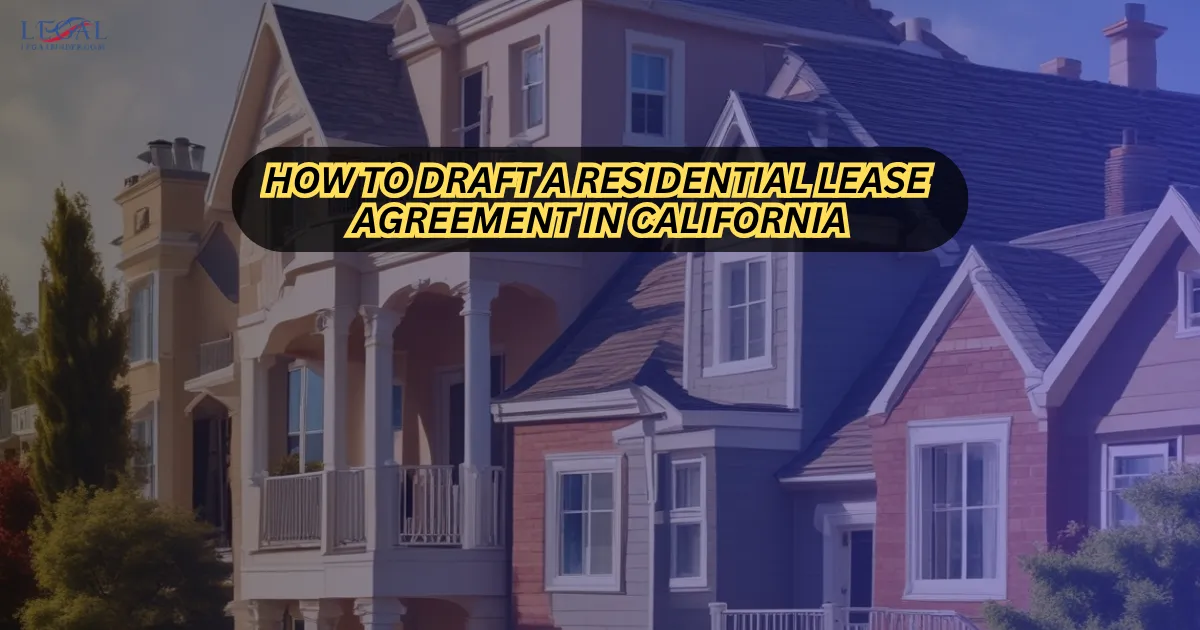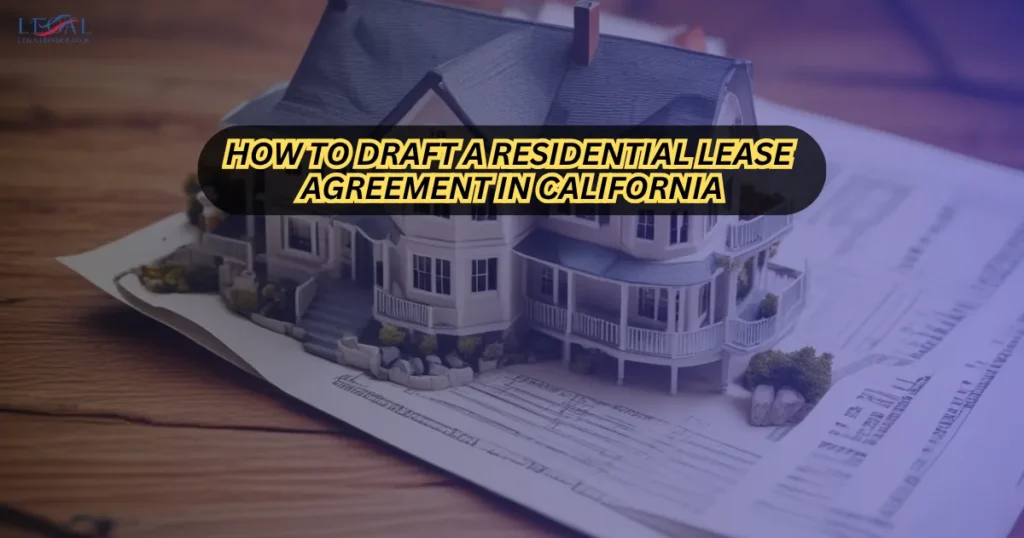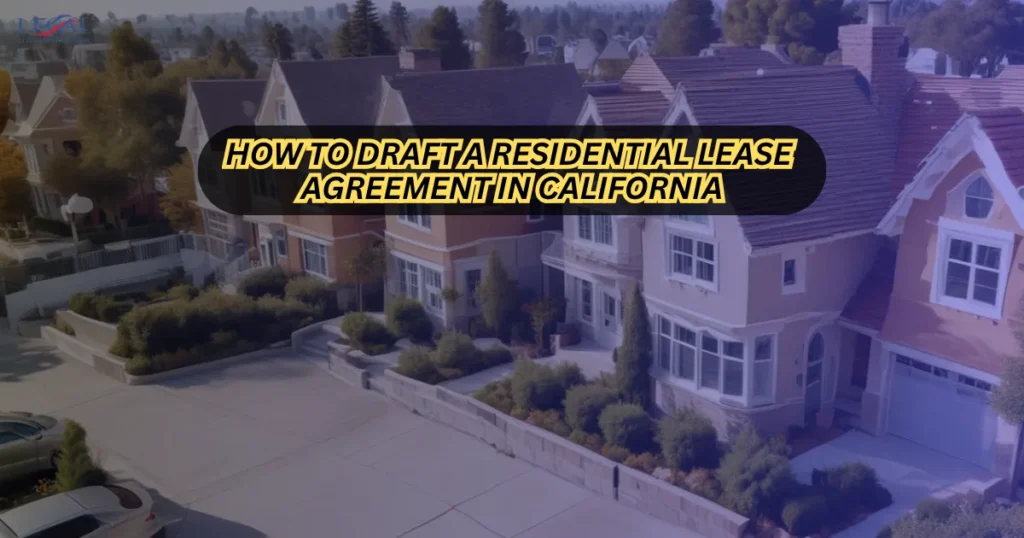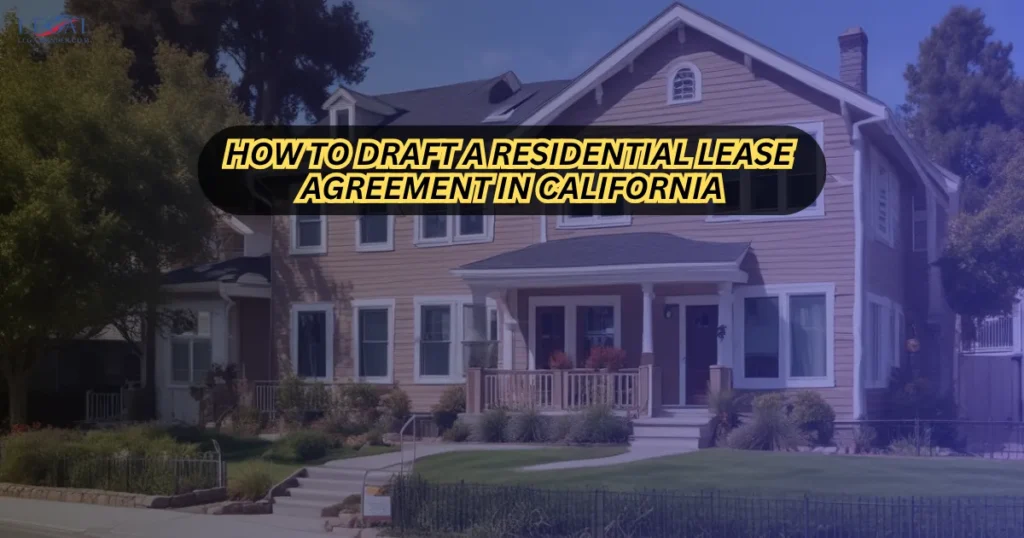Physical Address
304 North Cardinal St.
Dorchester Center, MA 02124
Physical Address
304 North Cardinal St.
Dorchester Center, MA 02124

How to draft a residential lease agreement in California is a question every conscientious landlord eventually asks, whether you’re renting a single-family home, a condo, or a multi-unit property. Your lease agreement is more than paperwork; it’s the foundation of your relationship with tenants and your strongest legal protection.

Imagine starting a rental agreement with nothing in writing. You welcome a tenant, but months later, disputes arise about rent deadlines, repairs, or property rules. Without a clear, legally binding lease, you’re navigating stormy waters without a compass. In California, where tenant-landlord laws are among the most protective in the nation, having a compliant, detailed, and fair lease agreement means avoiding messy disputes and protecting your investment.
This guide walks you through each critical step—so you can draft a document that meets California’s requirements, sets clear expectations, and fosters positive tenant relationships.
For more landlord and property law resources, visit our homepage.
A residential lease agreement is a written contract between you (the landlord) and the tenant, outlining terms of occupancy for a residential property. In California, such agreements must comply with state and local laws, addressing rights, responsibilities, and protections for both sides.
Useful official sources for California rental laws:
Clearly state the full names of the landlord and all adult tenants. This ensures everyone is legally bound by the agreement.
Include the exact address, unit number, and description of the rental space (e.g., “two-bedroom apartment on second floor”).
Specify whether it’s a fixed-term lease (e.g., 12 months) or month-to-month, in compliance with local rent control ordinances if applicable.
California law limits deposits to two months’ rent for unfurnished units and three months for furnished. Include conditions for return.

Declare who may live in the property and policies on guests, subletting, and noise control.
You must include specific California disclosures, such as:
Explain how the lease will end, renewal procedures, and notice requirements.
All parties sign and date the lease to make it legally binding.
Clearly communicate policies during tenant onboarding.
Store signed leases securely both in print and digitally.
California laws change frequently—stay informed.
Do I need an attorney to draft my lease?Not necessarily, but legal review ensures compliance and protection.Can I use a standard lease template?Only if it’s customized to include all California-specific laws and disclosures.How much can I charge for a security deposit?Maximum is two months’ rent for unfurnished and three months for furnished units.Is a written lease required?Yes, for fixed-term agreements longer than one year; strongly recommended for all rentals.

Drafting a residential lease agreement in California is your best defense against disputes and your blueprint for a successful landlord-tenant relationship. With the right structure, legally required disclosures, and clear terms, you set the stage for a smooth rental experience.
Don’t wait—review your lease terms today and make sure they protect your property and comply with California law.
For more rental and property compliance resources, visit our home page.